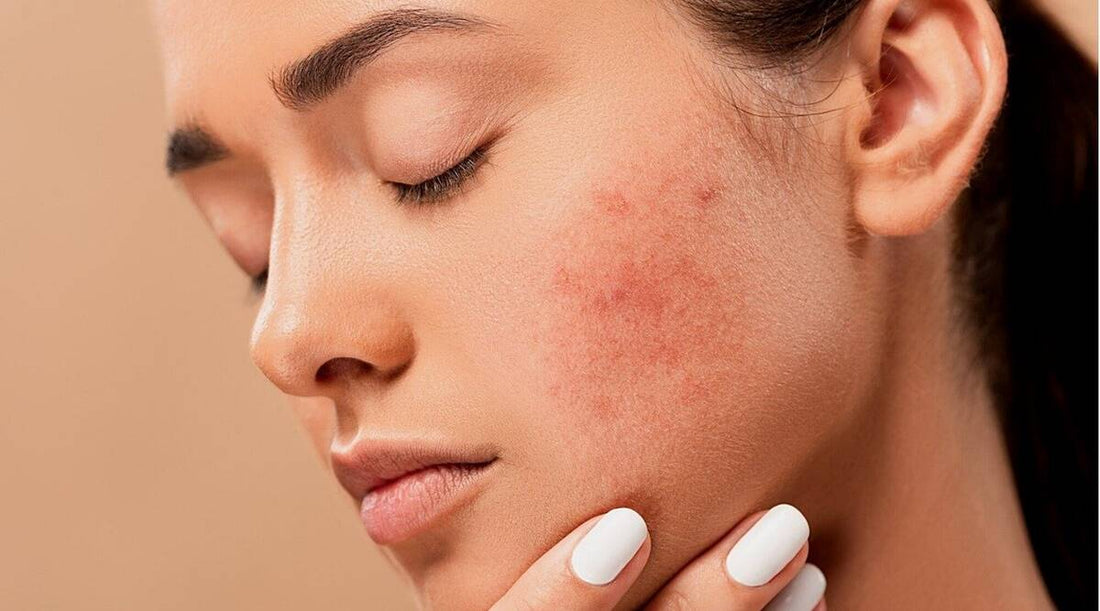Redness is something that many of our patients complain about in regard to their skin’s condition. It occurs when blood vessels dilate and blood rushes close to the surface of the skin. While redness can be caused by temperature change, food, allergies and reactions to products, the more common causes that people come to us for are acne, rosacea, broken capillaries and eczema.
Like any medical condition, it is important to seek professional help to diagnose and treat the redness properly.
You will also notice that in each circumstance, diet plays a major role. About 70% of what we eat accounts for the health of our skin, while 30% is affected by the proper topical treatment.
Redness Caused by Acne
Acne breakouts occur when there is an excess of oil (sebum) and the pores become blocked by dehydrated skin cells, bacteria and dirt.
Almost all acne is caused by hormones, namely progesterone, estrogen and cortisol (released when we are stressed). And acne doesn’t discriminate - while it is more typical in teenagers, many adults struggle with it as well.
Treatment includes keeping the skin consistently cleansed and balanced so that breakouts are kept at bay.
A healthy, anti-inflammatory diet is key. And finally, don’t pick at your skin, as this will inevitably cause longer healing times and potential scarring. Leave any extractions to a professional.
Redness caused by Rosacea
Rosacea is caused by abnormalities in the blood vessels. While there are several types of Rosacea, generally speaking, it is indicated by the appearance of expanded capillaries, red bumps and flushed skin over the cheeks and nose.
Flare-ups can be exacerbated by many things including prolonged sun exposure, extreme heat or cold, vigorous exercise, hot showers, as well as certain foods and ingredients.
While there is no cure for Rosacea, staying away from the triggers and being gentle and respectful to your skin will help lessen its appearance.
Redness Caused by Broken Capillaries
Capillaries are the smallest vessels beneath the skin and are responsible for the circulation of blood within the skin. These vessels are grouped together in places known as capillary beds or clusters of capillaries. When these vessels are disrupted (broken), thin red lines appear caused by the dilation of the veins beneath the skin. These are known as broken capillaries, spider veins and scientifically as telangiectasia.
The causes of broken capillaries range from genetics to extreme temperature changes, excessive drinking or smoking, UV damage, and skin trauma.
While anyone can experience broken capillaries, they are much more noticeable in lighter skin. And while you can lessen their appearance, they are very hard to get rid of once you have them. Certain products like Eldan Cosmetics Idrasensitive can greatly help reduce their appearance.
Be gentle with your skin, avoid hot water, stay away from harsh exfoliators.
Also, avoid using water-based moisturizers in winter. In these freezing temperatures, use a thick layer of oil-based cream, which will keep the lipidic layer protected and hydrated.
Redness Caused by Eczema
Eczema, or atopic dermatitis, is a chronic skin condition that affects more than 30% of Irish population. It is often caused by inflammation in the body, but can also be a response to the environment.
Essentially, eczema compromises the skin’s ability to retain moisture and protect itself from free radicals and the result is a dry, flaky bumpy red rash.
The treatment of eczema involves eliminating inflammatory foods from one’s diet, avoiding harsh soaps and fragranced products, and keeping the affected areas moisturized.

